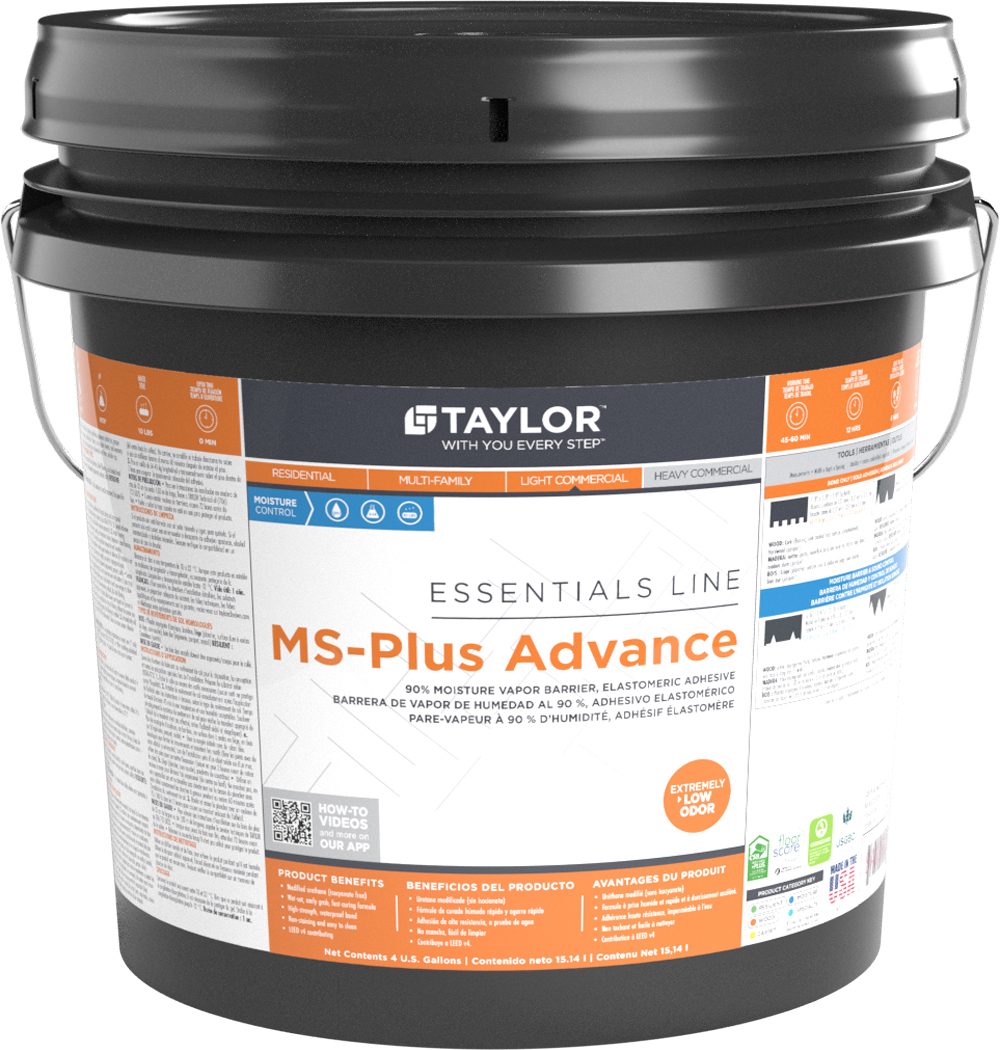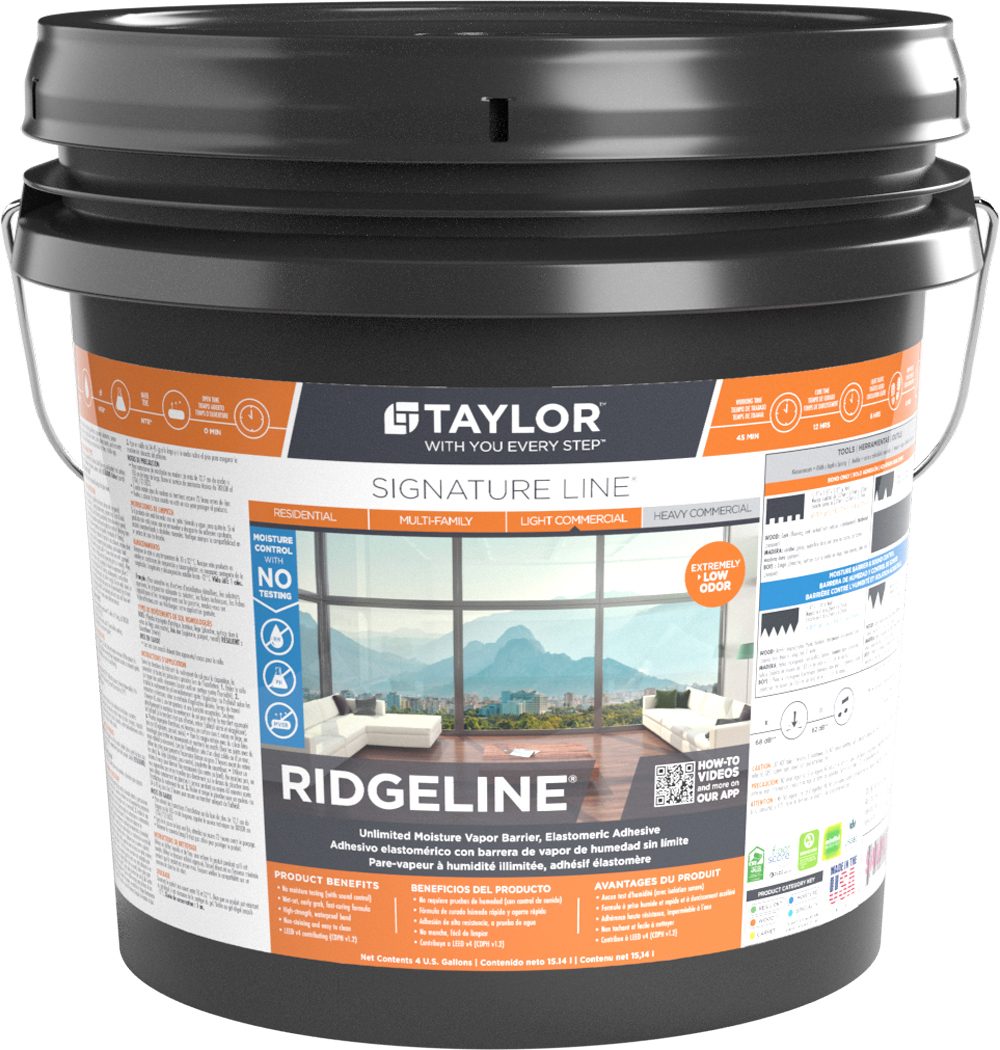The Evolution of Wood Flooring Adhesives
By: Gary Scheidker
// Mannington’s Sanctuary engineered hardwood collection in Seasalt has an ultra matte finish that softens the wood characteristics, comes in 10-inch-wide planks that run up to seven feet in length and has the option to be floated, nailed, stapled or glued down. Photo: Mannington.
With half a century in the flooring industry, I have seen many changes. Some of these changes have been good while others were not. When it comes to wood flooring adhesives there have been many changes.
Some of you may recall a time when cutback adhesive was used to install parquet flooring which later gave way to chlorinated solvents. Both types of adhesives worked very well but unfortunately, they were toxic. The cutback adhesives had high VOC content and some even contained asbestos. Chlorinated solvents were found to be a carcinogen and were legislated out in the 1980s. At that time, most glue down installations were parquet which is now almost extinct in the industry. There are still a few solvent-based wood flooring adhesives on the market, but they are flammable and have relatively strong odors. All the solvent-based adhesives cure hard which, in my opinion, is detrimental since wood flooring will expand and contract seasonally.
The elimination of chlorinated solvents opened the door for alternative wood flooring adhesives such as moisture cured urethanes and water-based acrylic-latex adhesives. Both adhesives required a learning curve for installers because of the cleanability issues of moisture cured urethanes with pre-finished flooring and the moisture content of the acrylic-latex products. Fortunately, both the moisture cured urethane and the acrylic latex adhesives have elastomeric qualities when cured. Since their initial introduction, there have been many improvements with both moisture cured and water-based adhesives.
// MS-Plus Advance is formulated for the interior installation of all wood flooring types. Photo: Taylor.

Fortunately, for us, competition has driven innovation with wood flooring adhesives. We have seen water-based adhesives improve with greater sheer strength and even cross-linking characteristics. These improvements have allowed water-based adhesives to be used with a wider variety of engineered wood flooring products. The moisture cured adhesive segment has seen the greatest number of added features and benefits. Many of these adhesives now allow the floor installer to offer moisture control over concrete substrates with minimal additional cost. The ability of these products to control moisture varies from product to product, but some products no longer require moisture testing which will save the installer both time and money. In addition to moisture control, some products provide acoustical benefits. These acoustical properties can eliminate the need for additional sound control underlayments by meeting or exceeding state or local building codes.
Over the years, the glue down segment of the wood flooring industry has exploded with wider varieties of engineered hardwood flooring and ever-increasing plank dimensions. These wider and longer planks have made substrate preparation even more critical today than in the past. This is because larger planks are less forgiving to undulations in the substrate since they will bridge, leaving voids between the substrate and flooring causing hollow spots. Once again, the adhesive manufacturers have provided a solution by offering larger trowels for use with large format planks thereby reducing the potential for hollows.
// Ridgeline offers complete protection for your wood floors. No moisture-related testing is required, saving you valuable time and money. Photo: Taylor.

To me, the most important addition in the wood flooring adhesive segment is modified silane adhesives which continue to evolve. Over 12 years ago, modified silanes/MS flooring adhesives were added to the mix in the U.S. market. These products offered the same benefits as traditional urethanes but without the baggage. They offer low odor, easy cleanability and easy spread ability. These silane-based products have a urethane backbone without the isocyanate content making them a heathier alternative for the flooring installer and homeowner.
Over the course of my time in the industry, many changes have taken place and will continue to do so. My advice to you is to keep an open mind to change when it comes to the sundries and accessories you use daily. Many installers find it difficult to change from their tried-and-true products. Admittedly, not all changes are improvements which makes using your experience and knowledge critical when selecting new adhesives or tools. Sometimes you find a solution which makes your life easier and provides a better product for your customer.

Gary Scheidker, director of technical services, Taylor Adhesives, has been in the flooring industry since 1970, starting in his father’s store. Scheidker’s background includes installer and flooring store owner over a 26-year period in the St. Louis area. He and his family relocated to Florida in 1996, and he went into distribution as a sales rep. In 2003, Scheidker started an agency carrying a variety of flooring and flooring products which included Taylor adhesives. In 2009, he quit his business to become a Regional Manager with Taylor. In 2016, he was tasked with transforming Taylor’s technical services department, which now includes five team members—three of which are CFI certified.
About the Author >>
